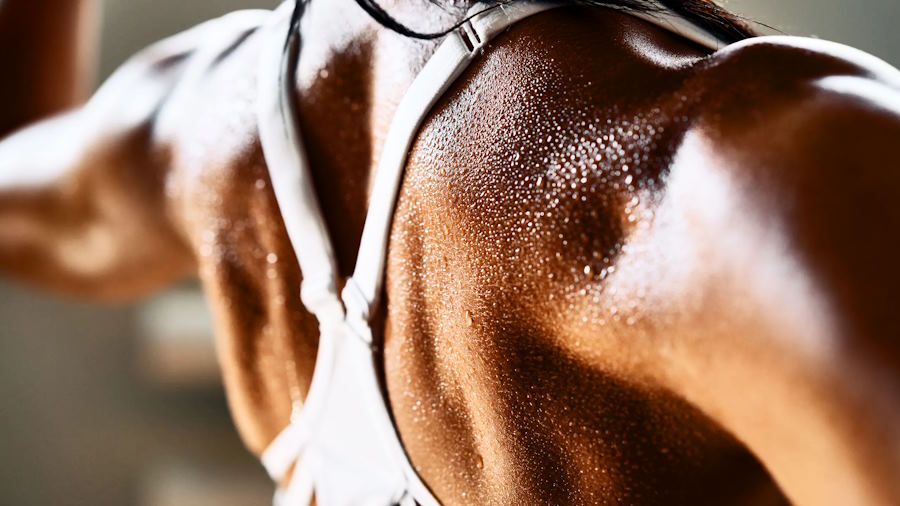
How Perspiration During Cycling Can Benefit Your Skin
Cycling, often celebrated for its cardiovascular benefits and contribution to overall fitness, holds a hidden gem within its vigorous pedaling and rhythmic motion: perspiration. While sweating might seem like an inconvenience or a mere sign of exertion, its impact on skin health is profound and multifaceted. Contrary to common misconceptions, sweating during physical activity like cycling doesn’t just serve to cool the body; it also plays a crucial role in cleansing, moisturizing, and rejuvenating our skin. Understanding the mechanisms behind perspiration and its effects on the skin reveals a remarkable synergy between exercise and skincare, shedding light on how pedaling through miles of pavement or rugged terrain can leave our skin not just invigorated but also glowing with vitality.
The Impact of Cycling on Perspiration
Cycling, with its dynamic movement and sustained effort, is an excellent inducer of perspiration. Whether pedaling through urban landscapes or traversing rugged terrains, cyclists engage their bodies in a continuous rhythm that prompts the release of sweat. The amount of sweat produced during cycling is influenced by various factors, including the intensity and duration of the ride, environmental conditions such as temperature and humidity, and individual factors such as fitness level and hydration status.
Proper hydration is essential for supporting healthy perspiration during cycling. Dehydration can impair sweat production and compromise the body’s ability to regulate temperature, leading to overheating and potential heat-related illnesses. Cyclists must maintain adequate fluid intake before, during, and after rides to ensure optimal hydration levels and support efficient perspiration.

Cleansing and Detoxification
One of the most significant benefits of perspiration during cycling is its cleansing and detoxifying effect on the skin. As cyclists sweat, the pores on their skin open up, allowing sweat to flush out dirt, oil, and toxins that have accumulated in the skin’s pores. This cleansing action helps prevent pore blockages, which can lead to acne breakouts and other skin blemishes.
Sweating during cycling also helps to unclog pores and remove dead skin cells, promoting skin renewal and a smoother complexion. Unlike harsh chemical exfoliants or abrasive scrubs, sweat provides a gentle yet effective means of exfoliation, leaving the skin feeling refreshed and rejuvenated. Additionally, the antimicrobial properties of sweat help to inhibit the growth of acne-causing bacteria, reducing the risk of breakouts and promoting clearer, healthier skin.
Improved Blood Circulation and Oxygenation
In addition to its cleansing effects, perspiration during cycling also promotes improved blood circulation and oxygenation to the skin. As cyclists engage in physical activity, their heart rate increases, pumping oxygen-rich blood to the skin’s surface. This enhanced blood flow delivers vital nutrients and oxygen to the skin cells, supporting cellular metabolism and repair processes.
The increased oxygenation of the skin during cycling promotes collagen production, a key protein responsible for maintaining skin elasticity and firmness. Collagen synthesis helps to reduce the appearance of wrinkles and fine lines, resulting in a more youthful and radiant complexion. Furthermore, improved blood circulation helps to flush out metabolic waste products and toxins from the skin, further enhancing its clarity and vibrancy.

Natural Moisturization
Contrary to popular belief, sweat serves as a natural moisturizer for the skin. While it may seem counterintuitive, sweating actually helps to hydrate the skin by replenishing moisture lost through evaporation. Sweat contains trace amounts of urea, a natural humectant that attracts and retains moisture in the skin, helping to prevent dehydration and maintain skin hydration levels.
During cycling, sweat acts as a protective barrier, shielding the skin from environmental pollutants and irritants. The moisture produced by sweating helps to keep the skin’s surface hydrated and supple, reducing the risk of dryness, flakiness, and irritation. Unlike synthetic moisturizers that may contain additives and preservatives, sweat is pure and natural, making it an ideal moisturizing agent for all skin types.
Skin Elasticity and Anti-aging Benefits
Perhaps one of the most coveted benefits of perspiration during cycling is its potential to promote skin elasticity and combat the signs of aging. As cyclists engage in regular physical activity, their bodies produce more sweat, which stimulates the production of collagen and elastin fibers in the skin. Collagen and elastin are essential proteins that provide structural support and elasticity to the skin, helping to maintain its firmness and resilience.
By promoting collagen synthesis, perspiration during cycling helps to minimize the appearance of wrinkles, fine lines, and sagging skin. The increased elasticity of the skin results in a smoother, more youthful complexion that radiates with health and vitality. Additionally, the detoxifying effects of sweating help to remove free radicals and oxidative stressors from the skin, reducing the risk of premature aging and preserving its youthful appearance.
 Meet Mary Gamez, the passionate voice behind Naked Women Racing. With years of experience in the cycling world, she shares insights, tips, and inspiring stories to empower fellow female cyclists. Join her journey as she explores the roads and trails ahead.
Meet Mary Gamez, the passionate voice behind Naked Women Racing. With years of experience in the cycling world, she shares insights, tips, and inspiring stories to empower fellow female cyclists. Join her journey as she explores the roads and trails ahead.